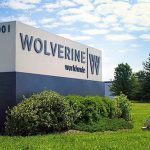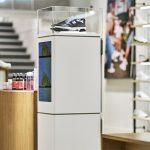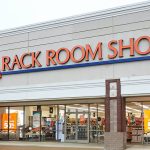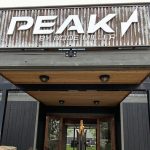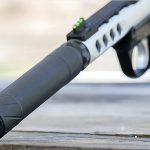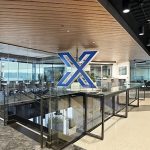Hanesbrands Inc., the parent of Champion, projected it could double EPS over the next three to four years based on expectations for 2010 net sales growth of 5% to 8% and EPS growth of 25% to 35%. It also said it is looking at smaller acquisitions to grow.
The company said it will discuss its growth expectations and targets along with sales,
marketing and supply-chain initiatives at an investor meeting to be held at 9
a.m. EST today at the Jumeirah Essex House in New York City. The meeting, which
will end by noon, will also be webcast on the Internet, accessible at
www.hanesbrands.com.
The company’s expectation for 2010 sales growth is based on significant
shelf-space and distribution gains and a potential rebound in consumer
spending. Expectations for EPS growth in 2010 depend on these increased sales,
continued cost reduction and effective use of free cash flow.
“Hanesbrands is at an inflection point to begin realizing its significant
growth potential,” Hanesbrands Chairman and Chief Executive Officer Richard A.
Noll said. “We have spent the last few years building a strong growth platform
that utilizes our big brands to drive top-line growth domestically and
internationally, a low-cost global supply chain to drive margin improvement,
and strong cash flow to support multiple strategies for earnings growth. We see
very strong growth in 2010 and are targeting consistently strong growth for the
longer term.”
For 2011 and beyond, the company has long-term annual growth targets supported
by its growth platform of big brands, low-cost supply chain and strong cash
flow.
* Annual net sales growth target range of 2% to 4%.
* Annual EPS growth target range of 10% to 20%.
“As we leverage our growth platform, we have the potential to double EPS over
the next three to four years by increasing sales, improving operating margins
and effectively using our cash flow,” Hanesbrands Executive Vice President and
Chief Financial Officer E. Lee Wyatt said.
At the investor meeting, the company will illustrate different scenarios in
which it could achieve EPS of $3 or $4 using multiple planning assumptions.
That compares with EPS excluding actions of $1.66 in 2009. The illustrations
and the company’s forward-looking expectations and planning assumptions
expressed in this press release and at the investor meeting are based on a
business climate of modest economic growth, moderate cost inflation and slowly
increasing interest rates.
Sales Growth
Hanesbrands, which had sales of approximately $3.9 billion last year, has five
major business segments: Innerwear, Outerwear, Direct to Consumer, Hosiery and
International. Using big brands to drive top-line sales increases is the first
plank of the company’s growth platform.
The company has locked in shelf-space gains that are expected to generate
approximately $200 million of additional sales in 2010, or 5%. With a consumer
spending rebound, sales could increase up to another 3 percentage points, or $50
million to $100 million.
Domestic Segments. In order to drive sales, Hanesbrands is using its consistent
investment in its strong brands, a disciplined innovation process and
integrated customer selling teams that use consumer insights.
“We have record shelf space gains for 2010 – the equivalent of 62 additional
miles of shelf space as our customers look for brands and products that will
help them increase sales and profits,” Hanesbrands President, Chief Commercial
Officer William J. Nictakis said. “By building upon this successful model and
helping our retailers make these space gains more productive, we believe that
we can consistently grow in 2011 and beyond.”
Over the long term, the company believes that its Innerwear and Outerwear
segments can sustain sales growth in the low to mid single-digit range, that
its Direct to Consumer segment can grow in the high single-digit range, and
that Hosiery segment sales may potentially flatten after declining by
approximately 10% in 2010.
“Our scale and leading brands across multiple segments afford us the
opportunity to meet face-to-face with our customer representatives at all
levels – from buyer to president and CEO,” Nictakis said. “Our focus on
consumer insights and helping customers use our brands to improve their sales
and profits is paying off with strong space and distribution gains across
multiple customers.”
International Segment. The company’s International segment businesses generated
approximately 11% of the company’s sales in 2009. These businesses are well
positioned as innerwear product leaders in the strongest growing economies of
the Americas and Asia.
“Our major International retail businesses operate in Mexico, Canada, Japan,
India, Brazil and China where a substantial amount of gross domestic product
growth outside the United States will be concentrated over the next 10 years,” Hanesbrands President, International Business and Global Supply Chain Gerald
Evans said. “We see a unique opportunity to integrate each of our international
businesses into our global supply chain so that we are able to dramatically
lower product costs, build share and expand into adjacent product categories.”
The company has already begun using this model to integrate its Mexico retail
operations into the company’s global supply chain, resulting in double-digit
sales growth last year and doubling of profits.
“We fully expect that our International sales will become another growth driver
for Hanesbrands, growing mid single digits in 2010 and at an accelerated rate
of high single digits to low double digits annually in the years ahead,” Evans
said.
Low-Cost Supply Chain
Hanesbrands has built a low-cost supply chain spanning both hemispheres that
leverages its size and scale to create a competitive advantage in a global
industry – the second plank of the company’s growth platform. The company has
three primary production centers located in the Caribbean Basin, Central
America and Asia.
“The heavy lifting of building our supply chain is substantially behind us,”
Evans said. “We will benefit from cost savings for several more years, and
there are more benefits through optimizing how it all works to drive further
cost reductions and to lower working capital investment.
“Our supply chain is positioned to reach more than 70% of the world’s GDP in a
trade-advantaged manner. This becomes a powerful platform in which to continue
to drive growth domestically and plug in our International businesses to create
competitive advantage.”
Cash Flow, Leverage and Acquisitions
Hanesbrands completed a debt refinancing in the fourth quarter of 2009 with the
primary benefit of the new capital structure being flexibility in the use of
the company’s strong cash flow to create maximum value – the third plank in the
company’s growth platform.
“We have established a flexible long-term capital structure to support growth,”
Wyatt said. “Our debt structure is simpler and gives us greater flexibility to
execute multiple strategies for earnings growth, including debt reduction and
selective bolt-on acquisitions.”
The company has generated significant amounts of free cash flow over the past
three years and has the potential to increase its free cash flow over the next
few years. Consistent growth at the high end of the company’s long-term sales
and EPS target ranges could result in $1 billion to $1.2 billion of cumulative
free cash flow over the next few years as a result of increased EBITDA, lower
cash interest and lower capital expenditures.
The company’s goal is to substantially reduce its leverage by targeting a net
debt level of 2 to 3 times EBITDA – down from 4.6 times at the end of 2009.
“We can make significant progress in achieving this target leverage during
2010,” Wyatt said. “EBITDA growth alone in 2010 could reduce the ratio to 3.9
times. The use of free cash flow in 2010 could further reduce leverage to a
range of 3.3 to 3.4 times through either debt reduction or a combination of
debt reduction and a bolt-on acquisition. The leverage target of less than 3
times EBITDA could be achieved as early as 2011.”
Hanesbrands will consider selective bolt-on acquisitions as one of its many
opportunities to drive growth. Potential acquisitions would have to meet
disciplined criteria of being in the core apparel essentials categories,
generating cost savings that leverage the company’s supply chain, providing
upside revenue opportunities, involving minimal integration risk, being funded
through free cash flow, being accretive in the first year, and delivering a
superior cash return to shareholders.
“If we see the opportunity to purchase something at a good price that has
supply chain synergies and growth potential, it could be a good way to create
value,” Noll said. “The ideal size would be around $200 million.”
Information for Business Modeling
Hanesbrands is providing annual net sales and EPS growth guidance for 2010. The
company also has a practice of providing an understanding of long-term targets,
goals, strategies, trends, current financial performance and information that
can be used to model the potential of the business.
Planning assumptions used to make forward-looking comments are based on modest
economic growth, moderate cost inflation and slowly increasing interest rates.
Sales. For 2010, Hanesbrands has reaffirmed that it expects sales growth of
approximately 5% in 2010, led by significant shelf-space and distribution gains
that will contribute stronger year-over-year growth in the first half. In the
event of a consumer spending rebound, the sales increase could be a few%age
points higher, or an additional approximately $50 million to $100 million.
Combining these two, the company would expect 2010 sales growth of 5% to 8%.
Beyond 2010, the company’s long-term annual growth target for net sales is 2%
to 4%.
Diluted EPS. The company expects EPS growth of 25% to 35% in 2010, with the
first half of the year seeing the strongest year-over-year improvement. The
company believes that net sales growth of greater than 5% would be needed to
reach the high end of the EPS growth range.
The growth expectation is based on potential 2010 GAAP EPS compared with 2009
EPS excluding actions of $1.66 (a non-GAAP measure; see terms and definitions
below). Comparing expected 2010 GAAP EPS to 2009 GAAP EPS of $0.54 would result
in growth of approximately 400%.
Beyond 2010, the company’s long-term annual growth target for EPS is 10% to 20%.
Consistent growth at the high end of the sales and EPS target ranges could result
in the doubling of earnings over the next three to four years to $3 to $4 per
share.
Operating Profit Margin. The company’s long-term operating margin expansion
could be in the range of 50 to 100 basis points per year, supported by gross
cost reduction of approximately $150 million cumulatively from 2010 through
2012. These gross cost reductions are expected to be recognized relatively
evenly over the three years with approximately 60% of the savings reflected in
gross margin and 40% in selling, general and administrative expenses.
For 2010, the margin expansion could be at the high end of the range and
assumes cotton cost increases of $10 million through the third quarter and any
fourth-quarter increase being offset by pricing or cost reductions. The company
expects a media spending increase of $6 million to be offset by lower pension
expense. For 2011 and 2012, the low end of the range could be achieved through
cost reductions and the high end through sales growth.
Interest Expense. Due to debt reduction in 2009, interest expense in 2010 is
expected to decrease by $20 million to $25 million. Interest expense in 2011
and 2012 will depend on the company’s use of free cash flow.
Due to the company’s debt refinancing in 2009, the cash used for interest in
2010 is expected to be approximately $30 million lower than what the reported
interest expense is expected to be in 20




